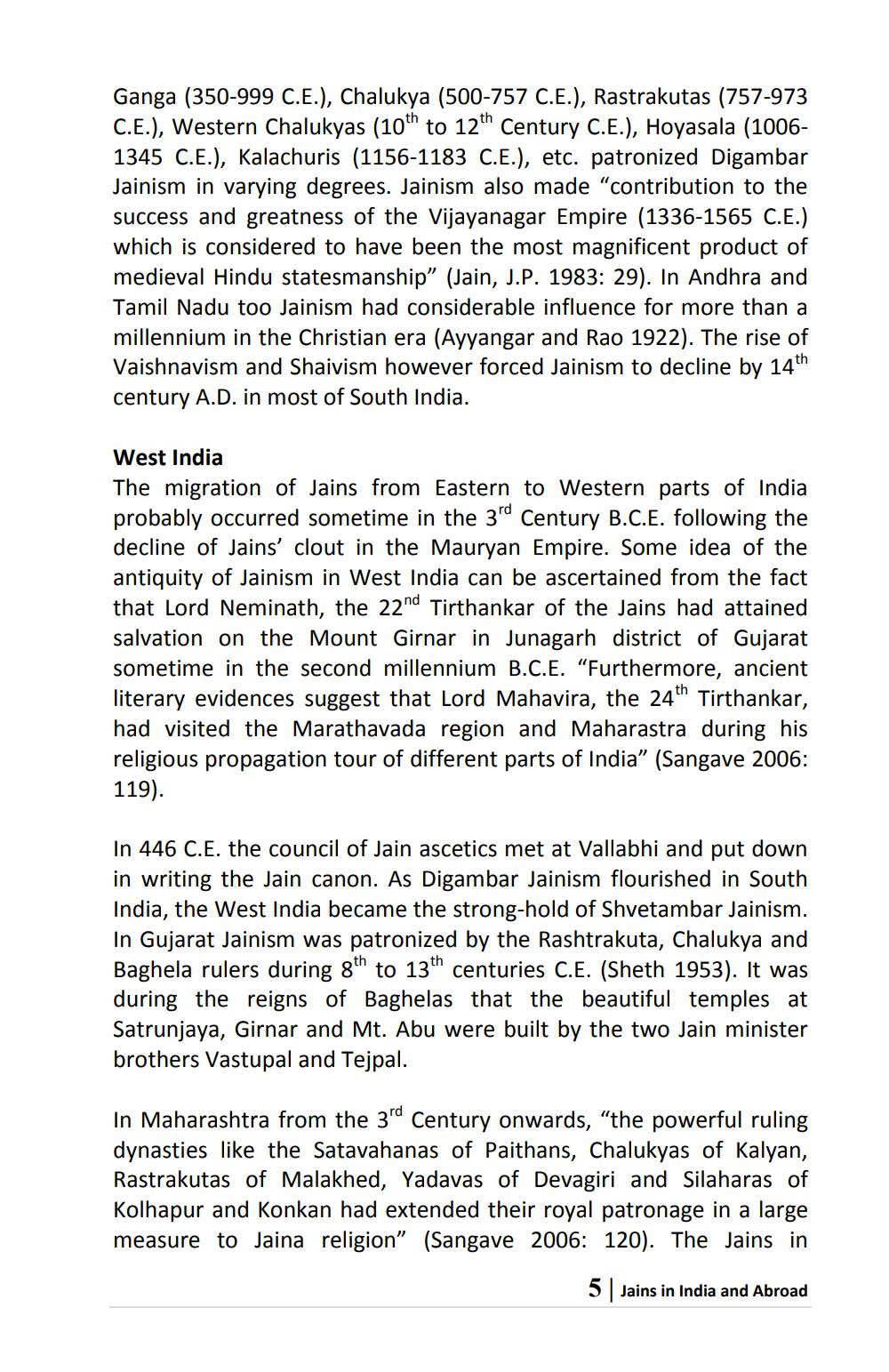________________
Ganga (350-999 C.E.), Chalukya (500-757 C.E.), Rastrakutas (757-973 C.E.), Western Chalukyas (10th to 12th Century C.E.), Hoyasala (10061345 C.E.), Kalachuris (1156-1183 C.E.), etc. patronized Digambar Jainism in varying degrees. Jainism also made "contribution to the success and greatness of the Vijayanagar Empire (1336-1565 C.E.) which is considered to have been the most magnificent product of medieval Hindu statesmanship" (Jain, J.P. 1983: 29). In Andhra and Tamil Nadu too Jainism had considerable influence for more than a millennium in the Christian era (Ayyangar and Rao 1922). The rise of Vaishnavism and Shaivism however forced Jainism to decline by 14th century A.D. in most of South India.
West India
The migration of Jains from Eastern to Western parts of India probably occurred sometime in the 3rd Century B.C.E. following the decline of Jains' clout in the Mauryan Empire. Some idea of the antiquity of Jainism in West India can be ascertained from the fact that Lord Neminath, the 22nd Tirthankar of the Jains had attained salvation on the Mount Girnar in Junagarh district of Gujarat sometime in the second millennium B.C.E. "Furthermore, ancient literary evidences suggest that Lord Mahavira, the 24th Tirthankar, had visited the Marathavada region and Maharastra during his religious propagation tour of different parts of India" (Sangave 2006: 119).
In 446 C.E. the council of Jain ascetics met at Vallabhi and put down in writing the Jain canon. As Digambar Jainism flourished in South India, the West India became the strong-hold of Shvetambar Jainism. In Gujarat Jainism was patronized by the Rashtrakuta, Chalukya and Baghela rulers during 8th to 13th centuries C.E. (Sheth 1953). It was during the reigns of Baghelas that the beautiful temples at Satrunjaya, Girnar and Mt. Abu were built by the two Jain minister brothers Vastupal and Tejpal.
In Maharashtra from the 3rd Century onwards, "the powerful ruling dynasties like the Satavahanas of Paithans, Chalukyas of Kalyan, Rastrakutas of Malakhed, Yadavas of Devagiri and Silaharas of Kolhapur and Konkan had extended their royal patronage in a large measure to Jaina religion" (Sangave 2006: 120). The Jains in 5 Jains in India and Abroad




